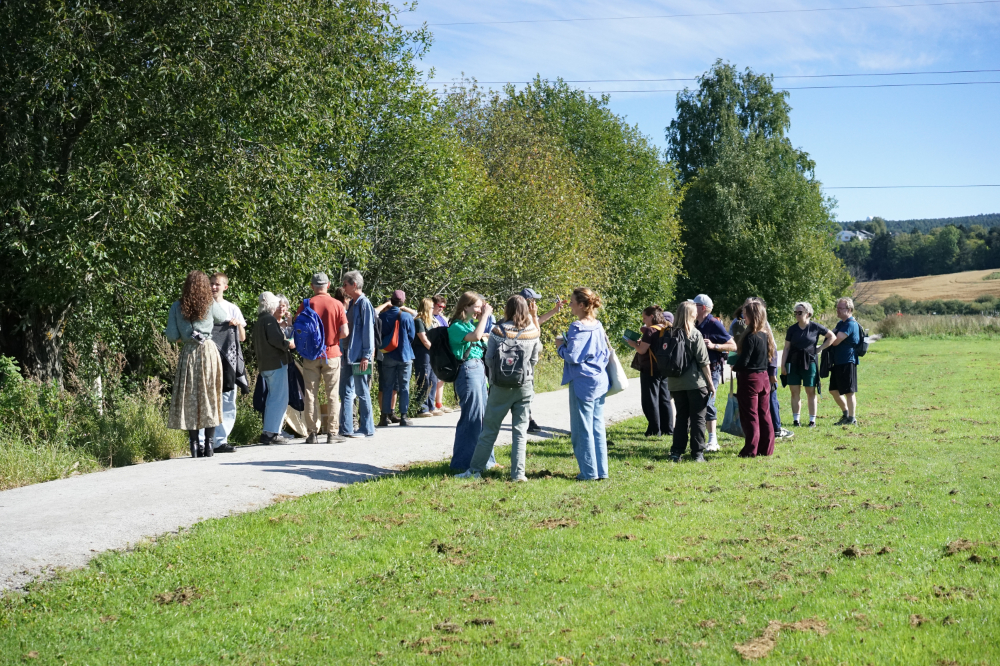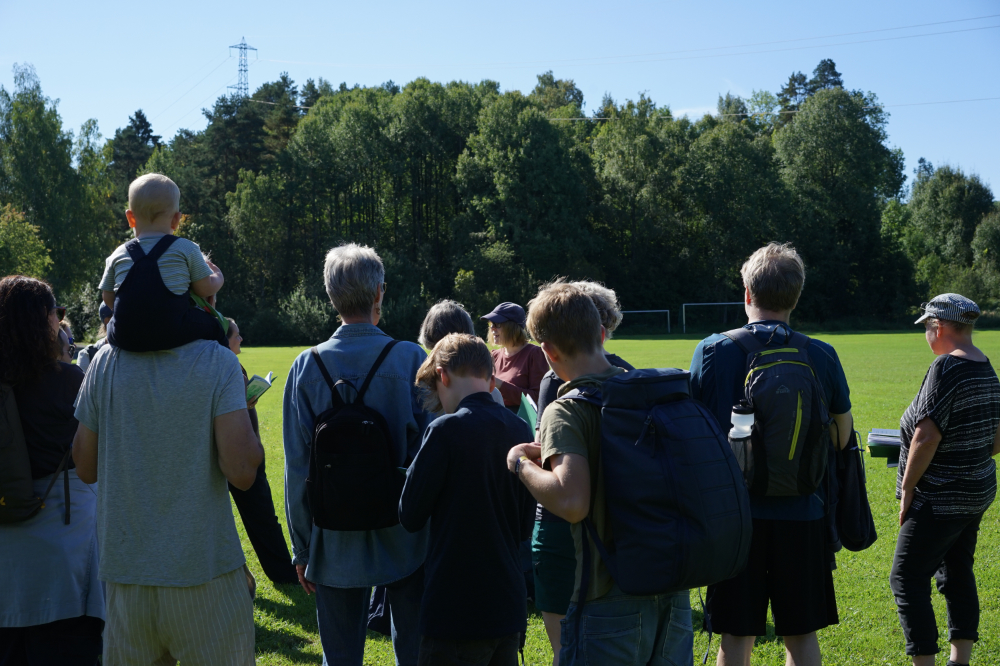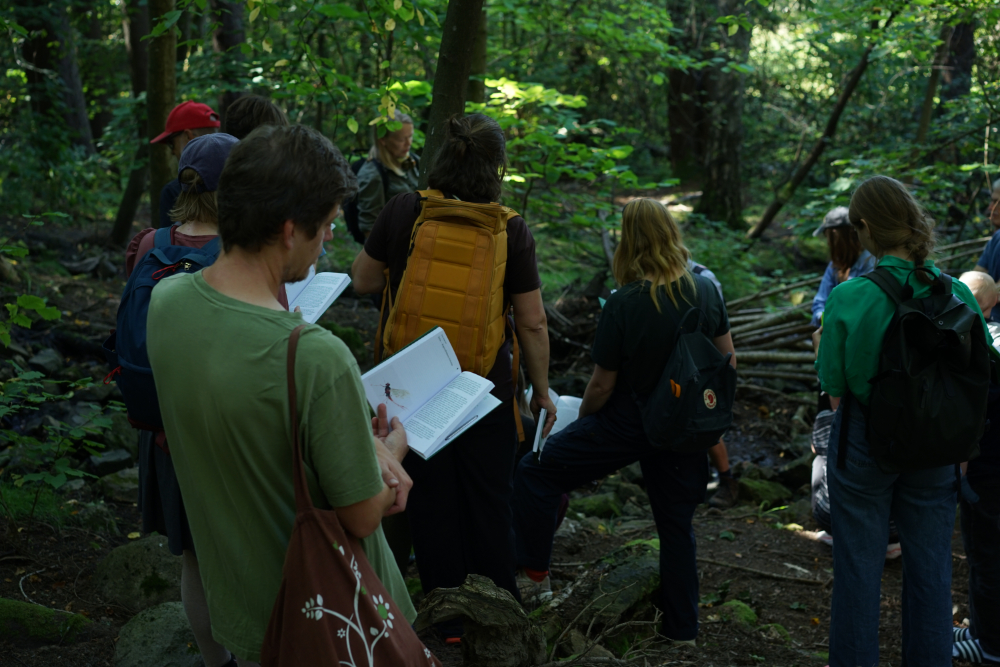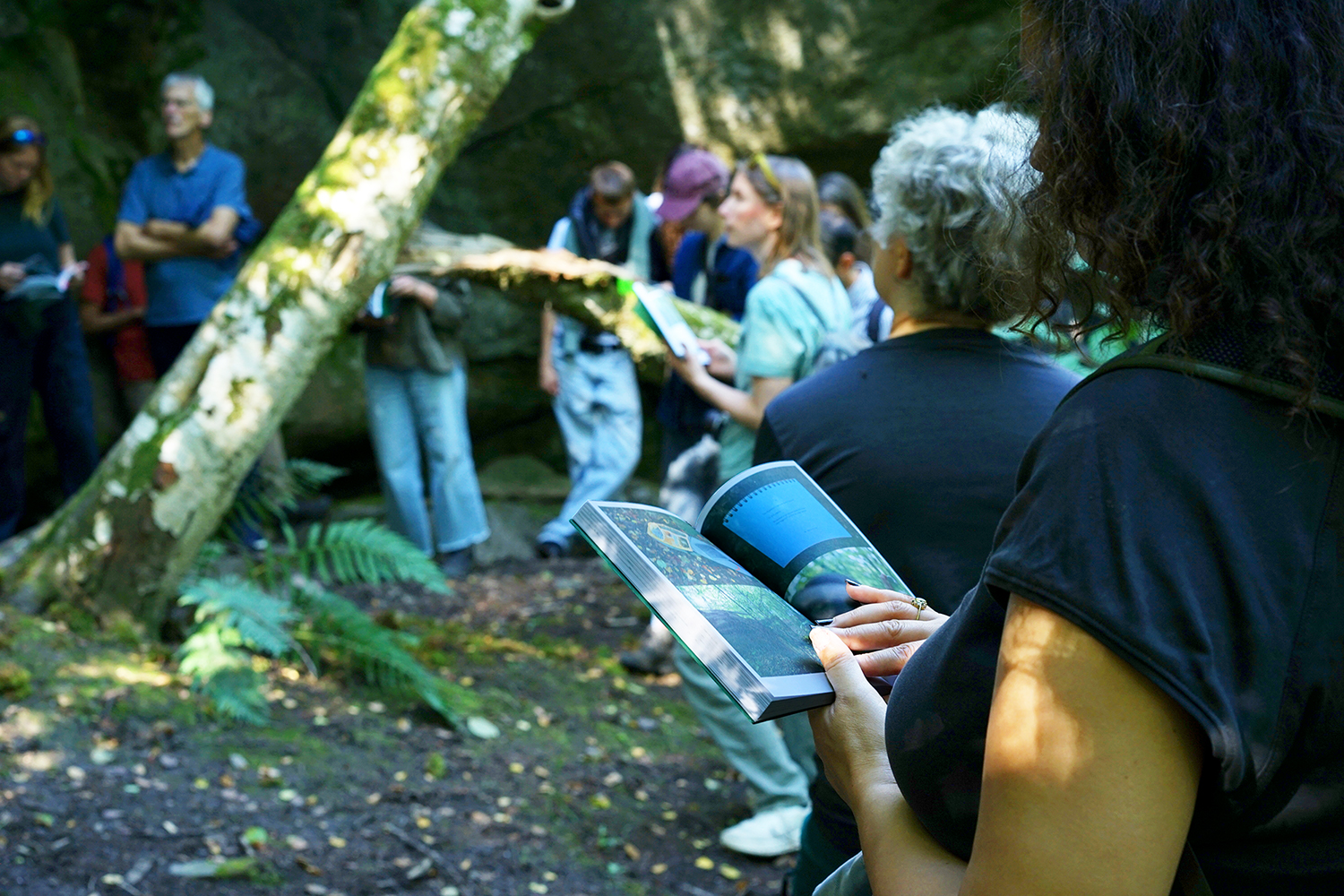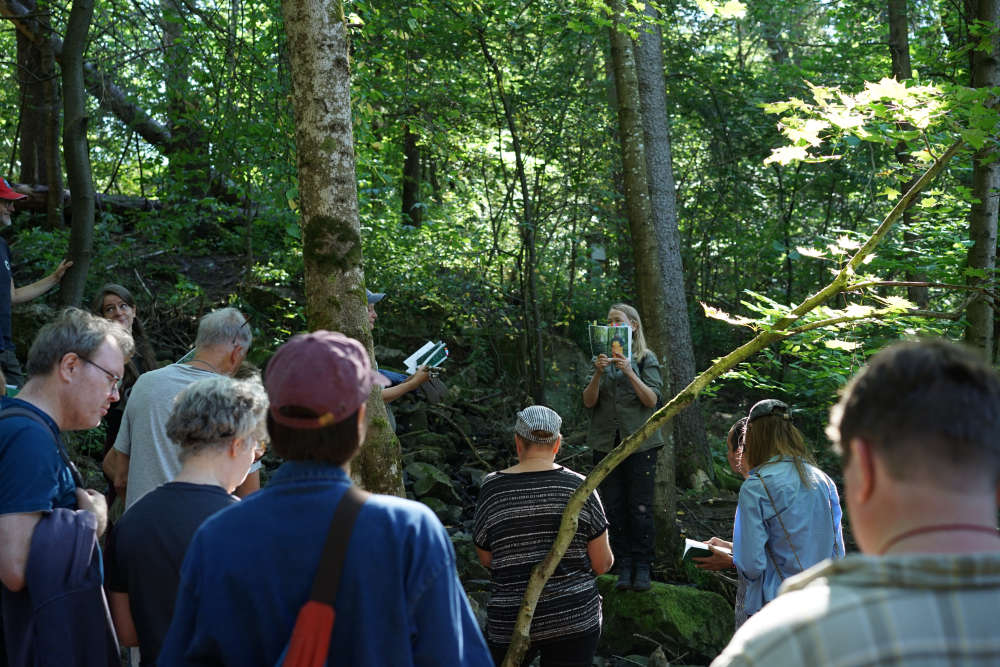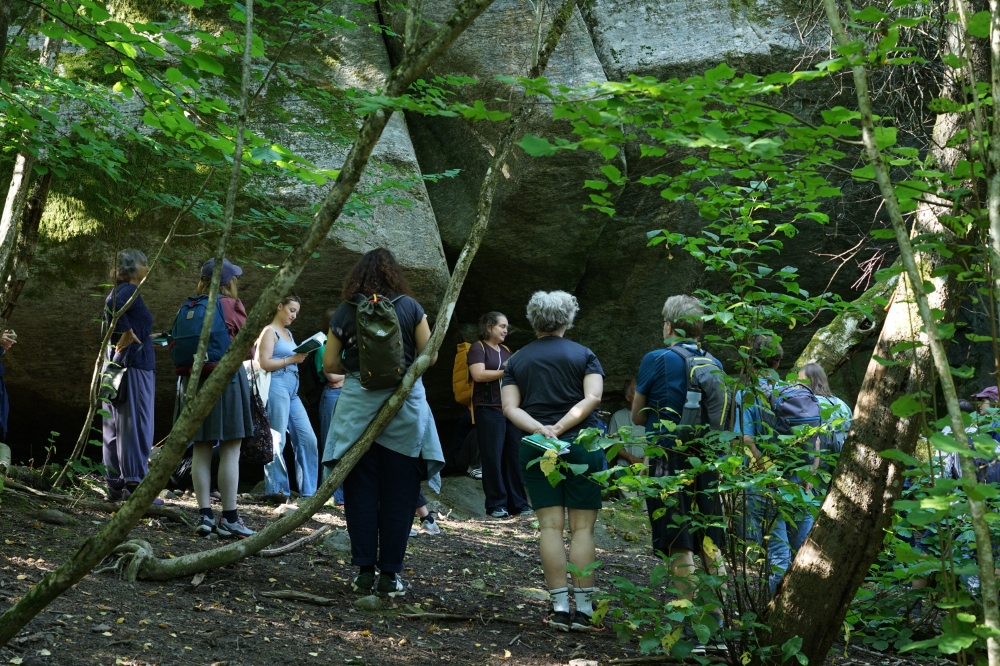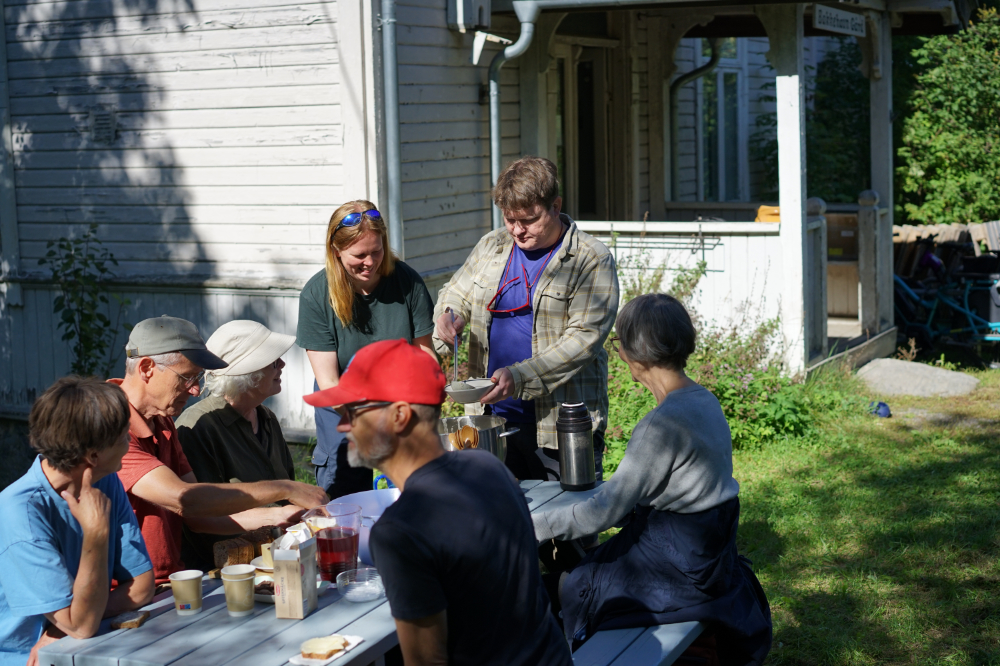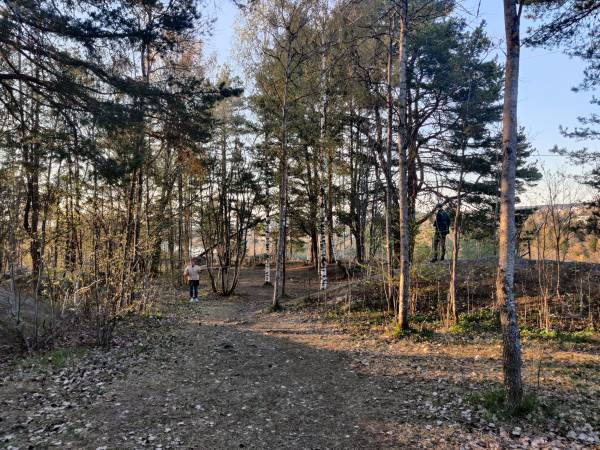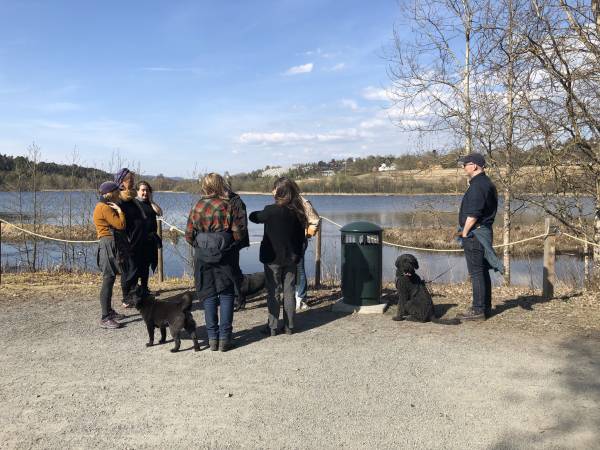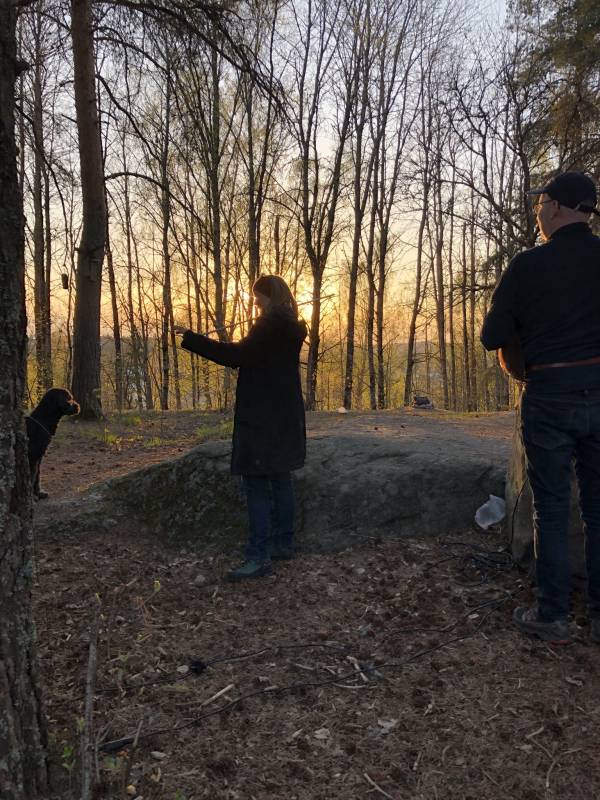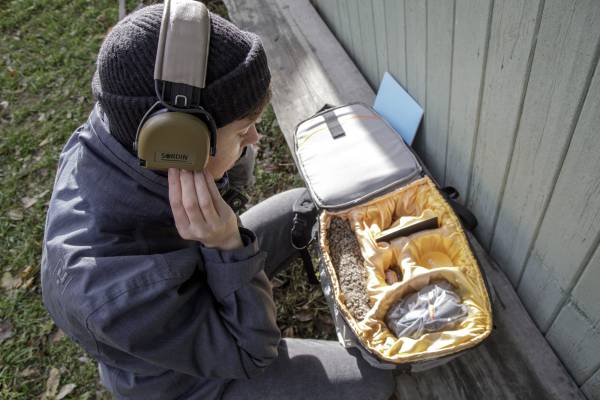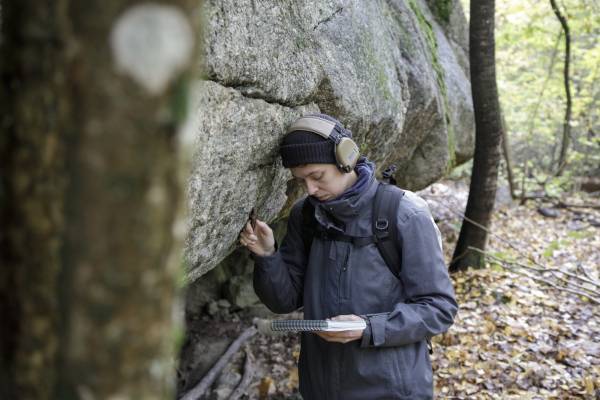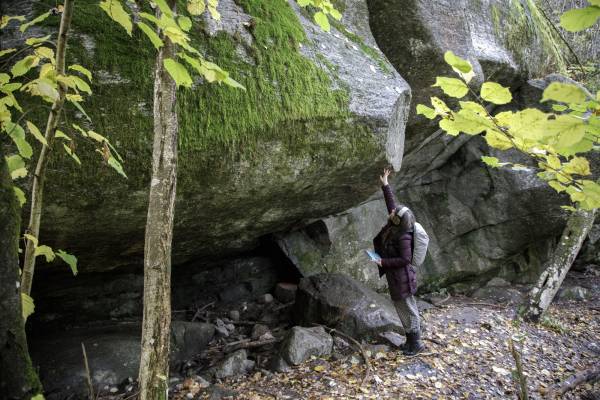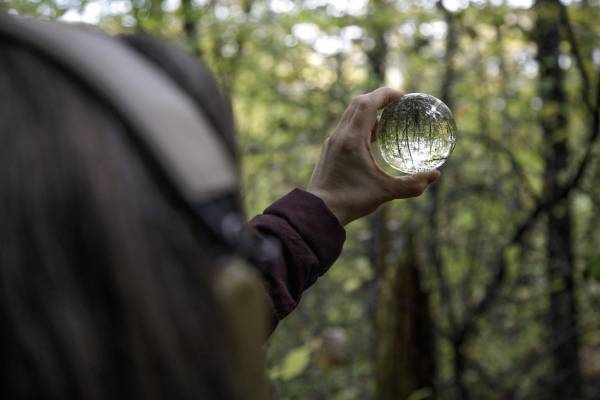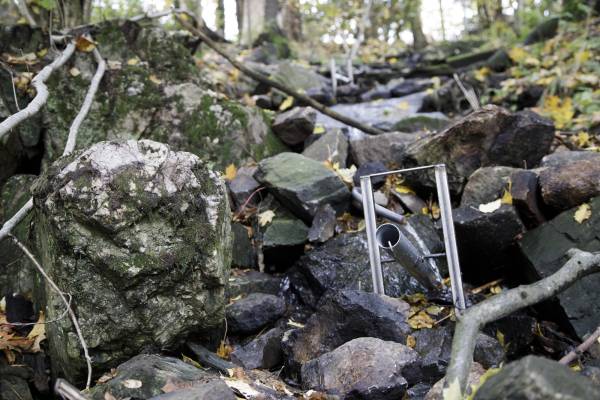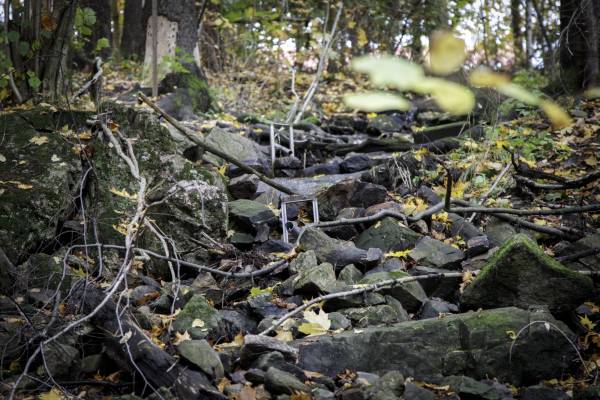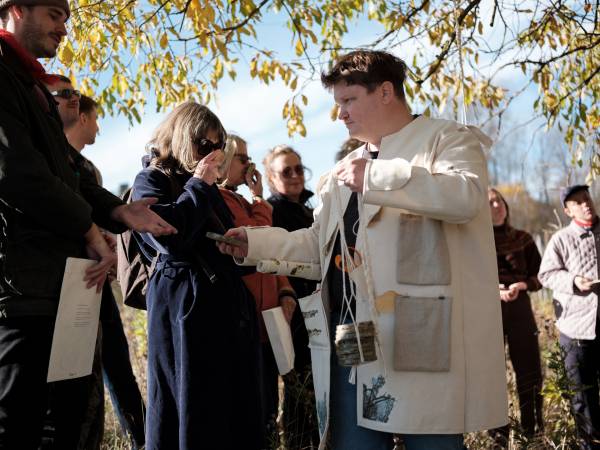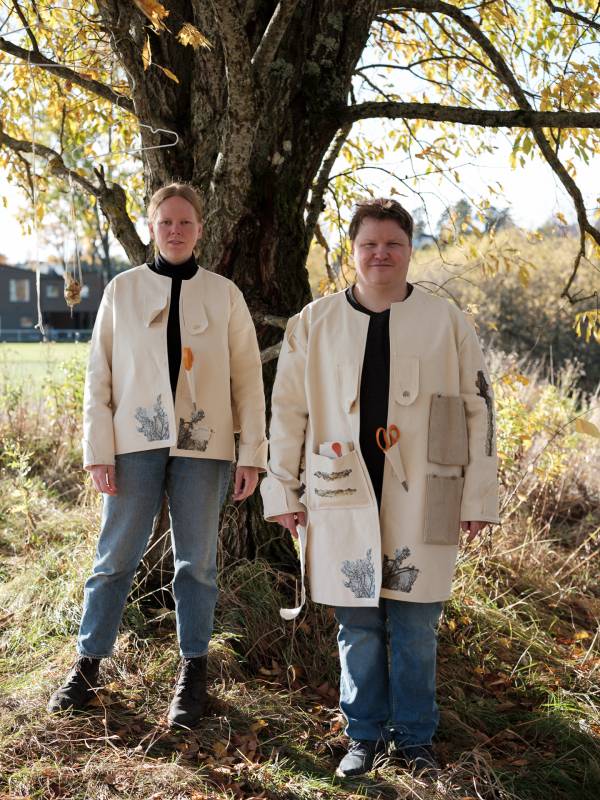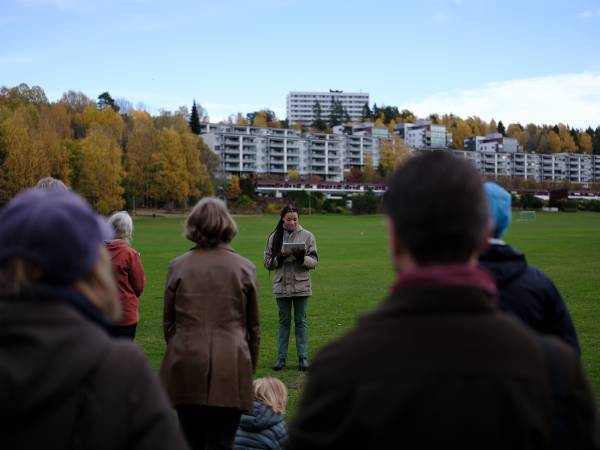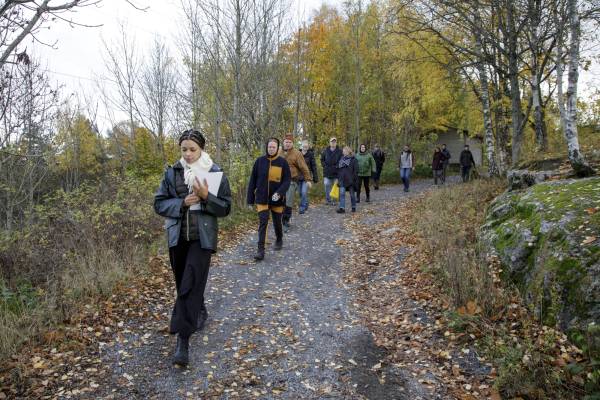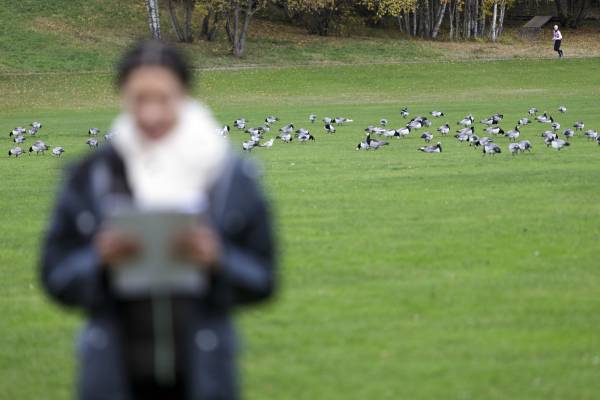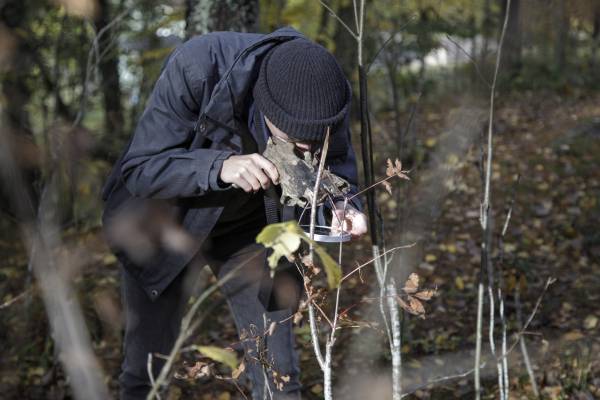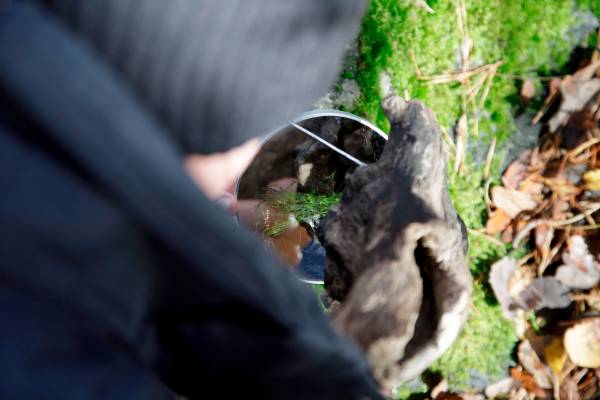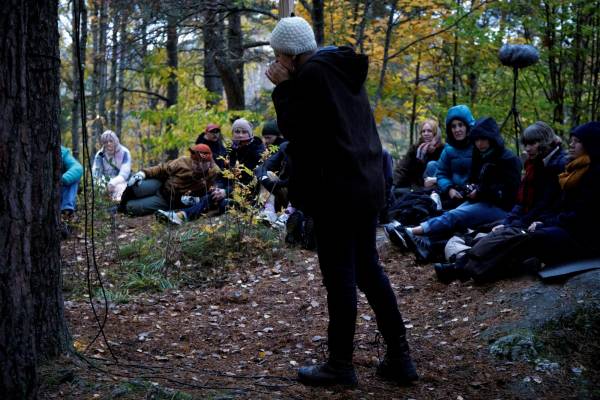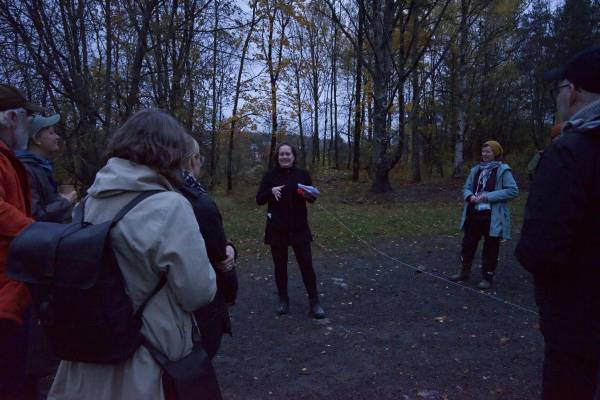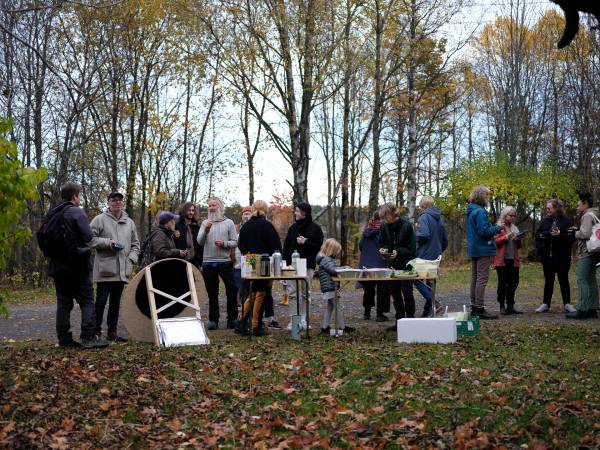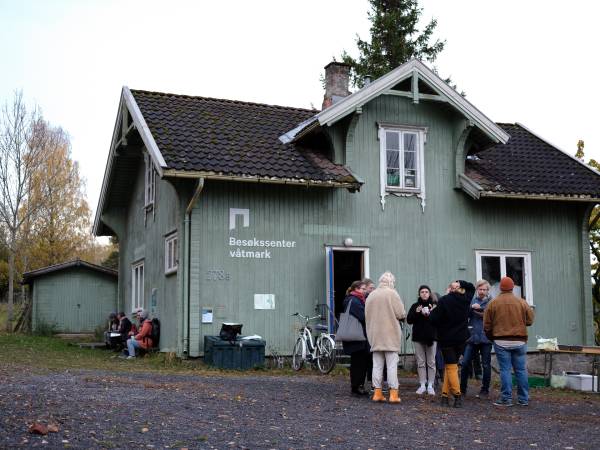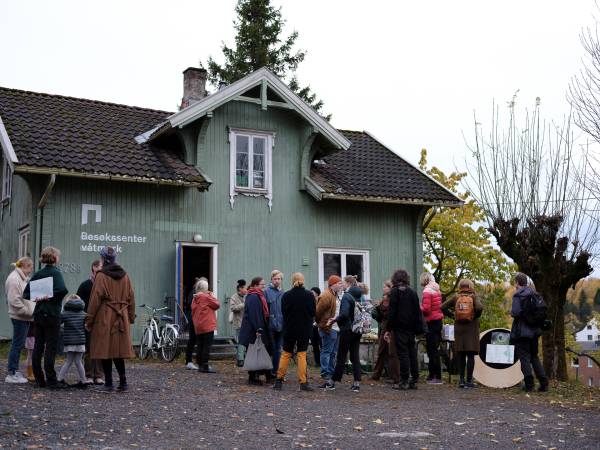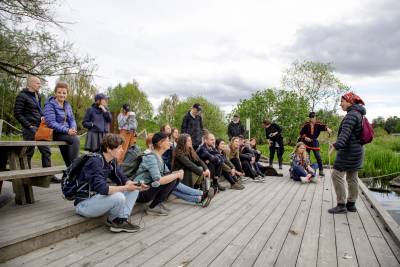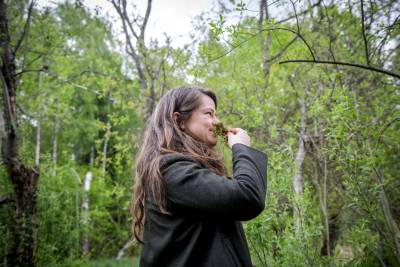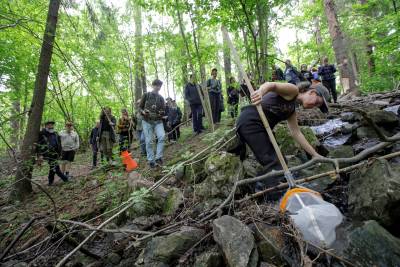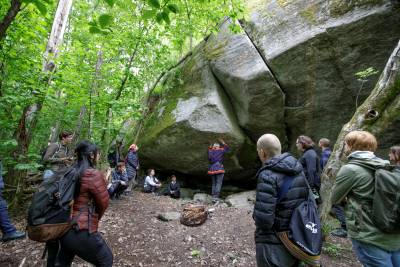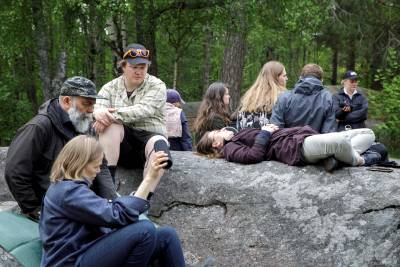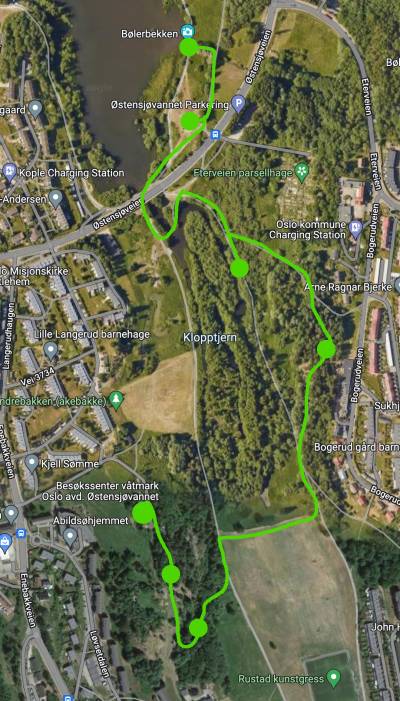Table of Contents
PAVILJONG VÅTMARK / PAVILION WETLAND
Paviljong Våtmark finner sted i Østensjøvannets naturreservat sine randsoner. Gruppen lanserte Våtmarksbiblioteket i 2024, en langvarig kunstnerisk tilstedeværelse i våtmarka.
Pavilion Wetland is taking place in the bordering zones to Østensjøvannet nature reserve. The group launched The Wetland Library in 2024, a longterm artistic commitment in the wetland.
Pavilion at Mycelium
Våtmarksbiblioteket BOOK LAUNCH: a public walk with reading sessions along the way
The walk ended at Bakkehavn with a lunch prepared by KVAE & BARK based on collected plants and herbs from the wetland area.
Våtmarksbiblioteket: Målestokk by Randi Nygård
More documentation of Nygårds work here.
Showcase for the neighborhood:
Showcase for a gathering of national wetland centers:
SPRING MEETING 2023
PAVILION WETLAND 13.- 15. OCTOBER 2022
Documentation of the three days in October when works of the Pavilion Wetland-artists were shown at various places in the area around Østensjøvannet nature reserve.
Andrea Bakketun
Andrea Bakketun′s work is a “kaleidoscopic guide” where one audience member at a time receives a backpack and a guide book that leads them towards a hidden cavity. Through the instructions and texts in the book as well as the kit for explorations found in the backpack, the audience is offered a multitude of entry points to access the place′s past and present.
Photo credits: Frank Holtschlag
Geir Tore Holm
With a view over the Østensjøvannet lake you find a human scale birdhouse made by Geir Tore Holm. On the inside, the walls of the house are painted with egg tempura and a palette of the colors based on the birds that are most present at the lake: the great crested grebe, mallard, tufted duck, eurasian coot, ruff, black-headed gull, swan, sedge warbler and woodpigeon. There is space for two people to sit inside and watch the life at the lake through two round holes in the wall.
Photo credits: Frank Holtschlag
Søssa Jørgensen
Søssa Jørgensen installed four rhythmic instruments in Bogerudbekken, one of the small streams leading water into the wetland. The instruments are inspired by Japanese shishi-odoshi and operated by the water. They are sensitive to the ever-changing flow in the stream, which constantly changes the rhythm.
Photo credits: Frank Holtschlag
KVAE&BARK
The artist duo KVAE&BARK made a performance based on their observations of the plants in the zones bordering the wetland nature reserve. They have developed a hybrid wearable for this area: a combination of a site sensitive flora, a tool and a jacket. During the performance, the audience got presented a poetic menu including the act of picking and stories around the plants they used. We got to taste: a bouquet of stinging nettle, sorrel, ground-ivy and yarrow; a sauce of pine cone shoots, horseradish and yarrow, topped with a sprinkle of fried nettle and powdered porcini mushrooms.
Photo credits: Michael Miller
Marie Nerland
Marie Nerland has been taking the football field bordering the bog of Bogerud as the starting point for a guided tour through the area. Here and on different spots along the route, performer Mariama Slåttøy read fragments of histories, creating a patchwork of connections.
Photo credits: Michael Miller
Credits for photos under: Frank Holtschlag
Randi Nygård
Randi Nygård has created an instrument for The Pavilion Wetland named the “Natursynskikkert” which could be translated into “Natureview-binoculars”. With a piece of wood and a modulated mirror at it´'s base, one or two audiences can borrow the instrument and observe their surrounding through it. Nygård has carved a tree-like shape into the middle of the mirror, making a pattern of transparent glass, blending the vision of what and whom you are looking at. Alongside the instrument, the audience gets a wearable speaker with a 12 min. audio piece where Nygård tells stories and poses questions about ways of understandings one's surroundings.
Photo credits: Frank Holtschlag
Vertikale Studier
Vertikale Studier is a collaboration between Espen Sommer Eide and Signe Lidén. Their performance started at dusk with a walk on the paths through the wetland and up to a small hill, where the live recording of a radio show was taking place. In the form of a radio montage, the two performers conducted different sound experiments alongside spoken words and recordings that were played through small speakers placed around in the trees. The sound experiments were interactions with a machine learning model trained on months of audio recordings from the wetland area. The performers used a range of acoustic instruments in order to both play with and search the achieve of sounds.
Documentation- recording of the live radio montage. This is a mixdown from 24 min performance into 16 min. Many thanks to Alexander Rishaug for recording it live.
Hild Borchgrevink
Opening event with a performative speech by Hild Borchgrevink. The speech was a series of reflections around the language, histories and origins of the words used in the “Fremmedartslista” - the list of “invasive non-native (alien) plant species” in Norway.
Photo credits: Jiska Huizing
Under: from the finissage event at Bakkehavn.
Photo credits: Michael Miller
Flyer delt ut på Østensjødagen på Bakkehavn
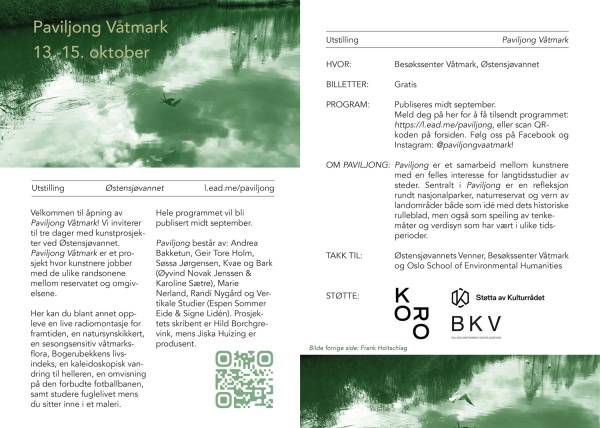
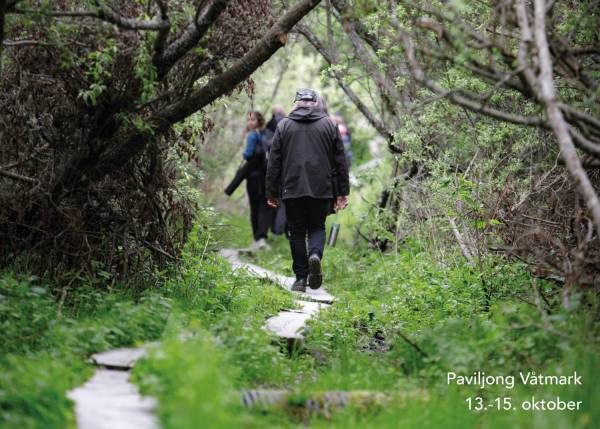
Flyer om prosjektet / Bilde over: Frank Holtschlag
Flyer about the project / Photo above: Frank Holtschlag
The Wetland Walkinar Audio Guide
Welcome to the Wetland Walkinar audio guide. This guide is based on audio documentation of the walkinar that took place on the 31st of May 2022 at Østensjøvannet, Oslo, Norway. The walking seminar was open for public and the contributors were: Thom van Dooren, Joanna Lynn Kemp, Eirik Myrhaug, Randi Nygård and Merve Tabur.
The audio documentation was made by Jiska Huizing.
The walk starts at the bird observation platform on the west side of the lake, where Merve Tabur is fabulating around long-time aspects of the wetland and its possible futures.
Next stop is on the path next to an old plain marsh. Here, artist Randi Nygård, will guide us on a peat-smell-session and tell us what this particular marsh has to do with the Venice Biennale 2022.
Now, you need to walk back ca 100 m until you find a path with wooden planks to step on that leads up towards the Bogerud stream. Here we meet limnologist Joanna Lynn Kemp. She will do kick-samples in the stream and based on her findings, can say something about the current health condition of this stream.
The walk continues down to and then across the Bogerud swamp to a stone formation close to Bakkehavn, where shaman and writer Eirik Myrhaug will share his knowledge about 'sieidditt'. The session is being live-translated to English by Geir Tore Holm.
Finally, on the height above Bakkehavn, we will listen to a recorded conversation between field philosopher Thom van Dooren and Randi Nygård. Based on sharing stories about encounters with birds and trees, the conversation explores how different forms of life express meaning.
The seminar is made in collaboration with The Oslo School of Environmental Humanities.
Thanks to: Østensjøvannets venner and Besøkssenter Våtmark.
Samling/Gathering III
5.-9. september 2021
Tredje samlingsuke for kunstnerne! Denne gangen var uken satt av mest til eget arbeid, men vi fikk også diskutert prosjektene og programmet for oktober.
Third gathering for the artists! This time, the week was mostly for the artists to work independently, but we also discussed their projects and the program for October.
Photo credit: Jiska Huizing


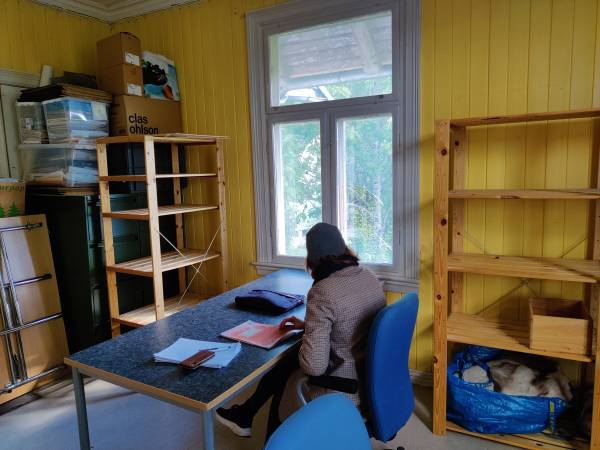
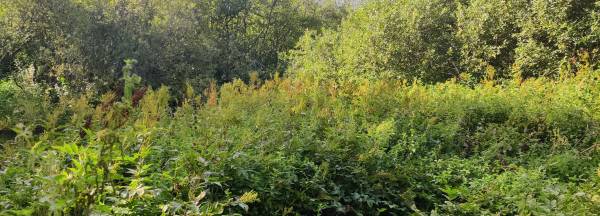
The Wetland Walkinar
31st of May
Photo credit: Frank Holtschlag
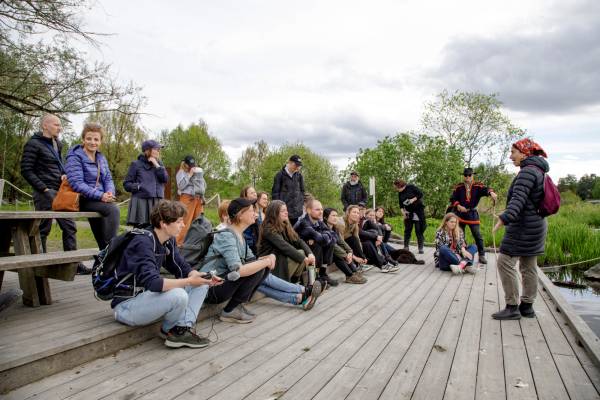 Merve Tabur reflecting on the long-term aspects of the wetlands and fabulating about possible future scenarios.
Merve Tabur reflecting on the long-term aspects of the wetlands and fabulating about possible future scenarios.

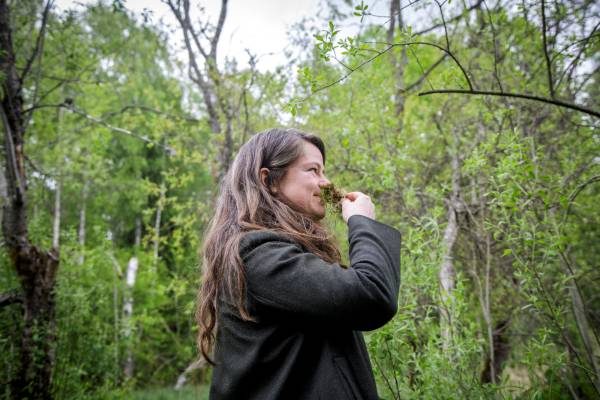
Artist Randi Nygård smelling peat moss while reflecting on her work with the smell of various peat areas in Norway.
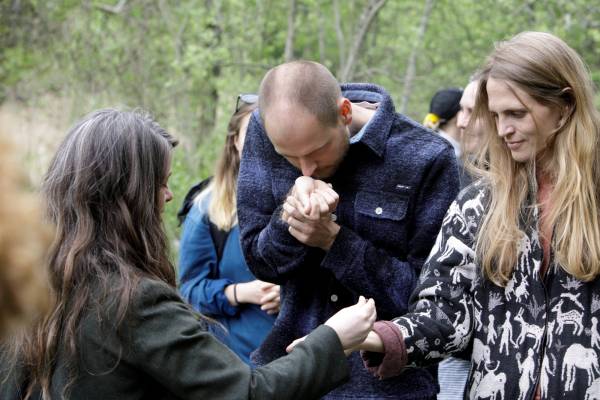
Randi sharing the 'Norwegian peatlands' perfume she created for the project The gift of scent, which is part of the Chilean pavilion at this year's Venice Biennale.

Limnologist Joanna Lynn Kemp doing a kick sample in the Bogerud stream to show us the types of life that exist in this stream.

A closer look at Joanna's finds.
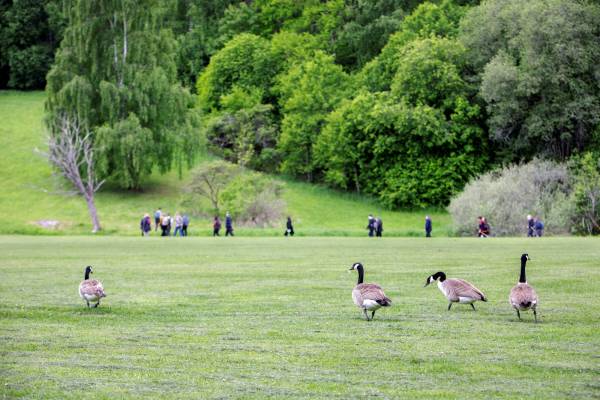
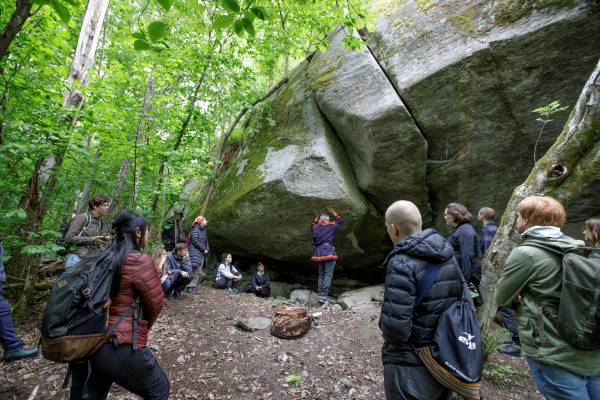
Sami shaman and writer Eirik Myrhaug connecting to this special stone formation close to Bakkehavn.
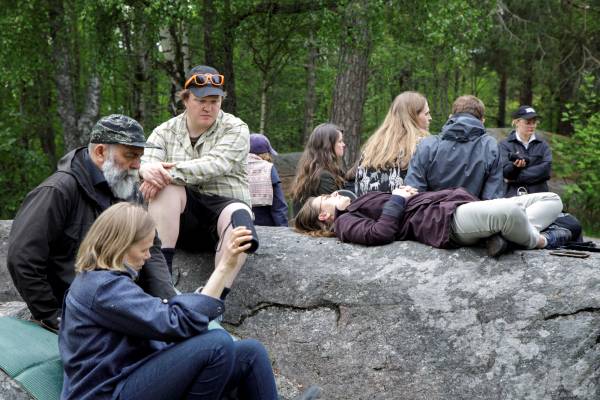
The walkinar's public listening to a pre-recorded conversation between field philosopher and writer Thom van Dooren and Randi Nygård.
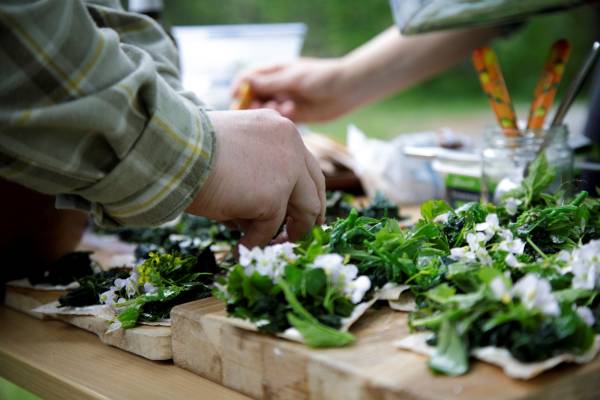
A 'taste of Østensjøvannet' was shared, made up of edible plants that the Pavilion-group gathered together earlier that day under guidance of Kvae & Bark.
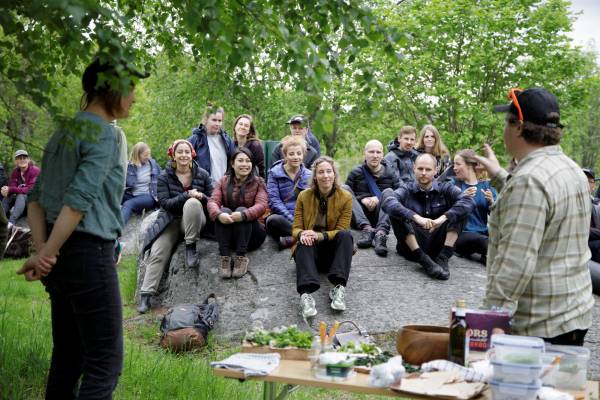
Ending The Wetland Walkinar together.
Sharing meaning: on trees, crows and the art of cohabitation
A conversation between Randi Nygård and Thom van Dooren
Samling/Gathering II
30. mai- 04. juni 2021
Junisamling i Østensjøvannet på Bakkehavn / June meeting at Østensjøvannet at Bakkehavn.

Plantesanking/Edible plant gathering
Under guidance of Kvae & Bark
31st of May
Nettside til Kvae & Bark (Øyvind Novak Jenssen & Karoline Sætre)
Oppskriftene på de presenterte 'smakene av Østensjøvannet':
Recipes of the presented 'tastes of Østensjøvannet':

Photo credit: Frank Holtschlag
En smak av Østensjøvannets randsoner:
- Brennesle / Nettle
- Engkarse / Cuckoo Flower
- Flatbrød / Flatbread
- Gaukesyre / Wood-sorrel
- Gjerdevikke / Bush vetch
- Granskudd / Spruce shoots
- Korsknapp / Ground-ivy
- Løkurt / Garlic mustard
- Olivenolje / Olive oil
- Russekål / Hill mustard
- Salt / Salt
- Skvallerkål / Ground elder
- Smør / Butter
- Smørbukk / Orpine
- Skyll skvallerkål, russekål, engkarse, smørbukk, granskudd, gaukesyre og gjerdevikke. Tørk plantene lett på litt tørkerull, og bland til en salat som smakes til med olivenolje, salt og sitron.
- Forvell brennesle, og hakk i passe biter. Bland med opphakket løkurt og korsknapp. Stek det hele i litt olivenolje og smak til med salt.
- Legg brennesleblandingen i bunnen på et flatbrød med smør, og topp med salaten.
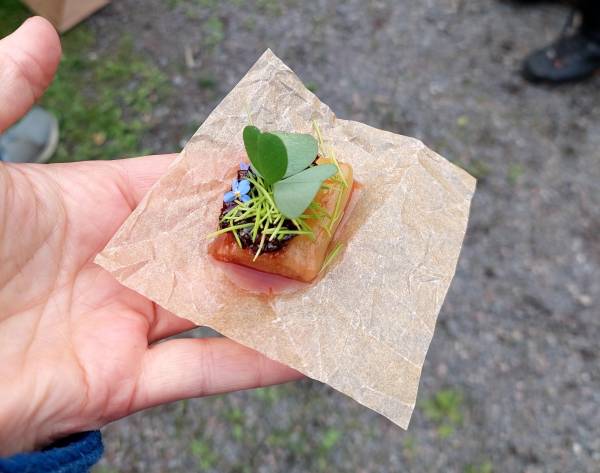
Photo credit: Ase Brunborg Lie
Søt dessert fra randsonen:
- Forglemmegei / Forget-me-not
- Furukongleskudd / Scots pine cone shoots
- Granskudd / Spruce shoots
- Rabarbra / Rhubarb
- Sukker / Sugar
- Kok granskudd i tjue minutter, sil væsken og tilsett sukker for å lage en base til å koke furukonglene i. Kok denne basen, med furukongleskuddene oppi, på middels varme til sirupen er tykk men ikke brent, og konglene helt møre (ca 4-5 timer).
- Rabarbraen kokes på lav varme i sukkerlake, avskjær fra rabarbra og litt sirup fra furukonglene. Kokes møre.
- Porsjonerte rabarbraer toppes med en furukongle og noen forglemmegei før noen nåler fra granskudd drysses over.
Bilder fra sankeprosessen:
Photos from the gathering process:
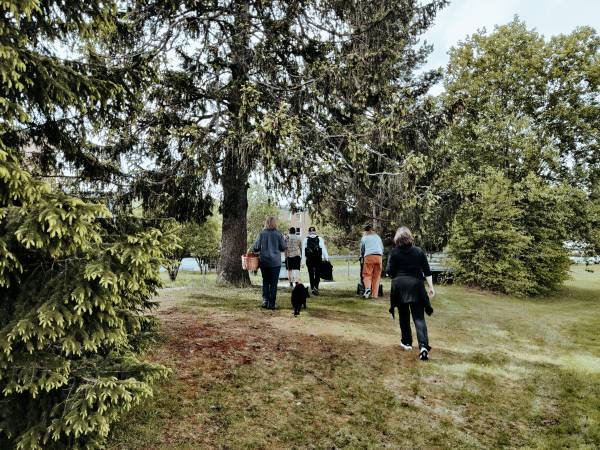

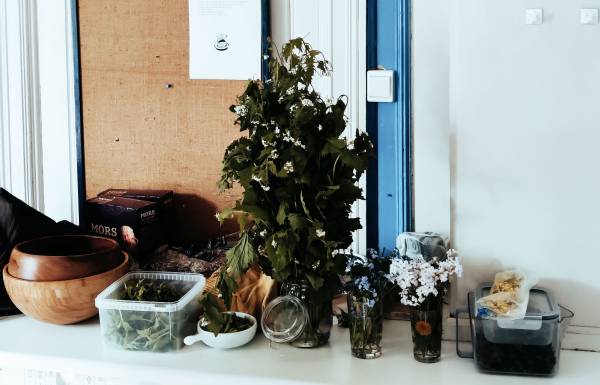
Photo credit: Signe Lidén
Vannkikkert/Water binoculars workshop
30th of May
En workshop for å lage DIY/eksperimentelle vannkikkerter.
A workshop to make DIY/experimental water binoculars.
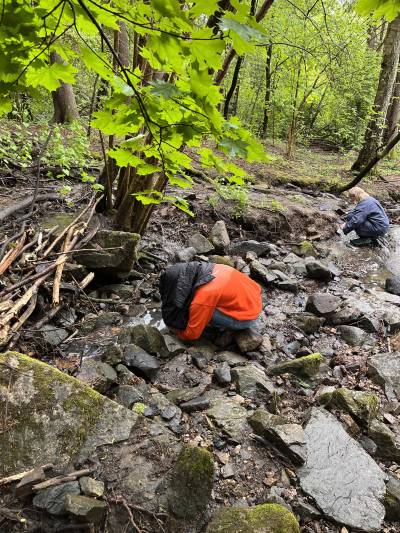
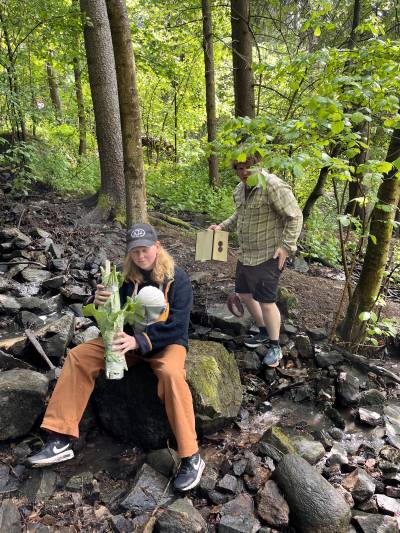
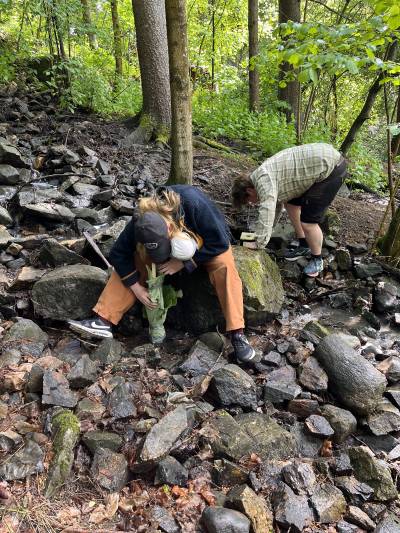
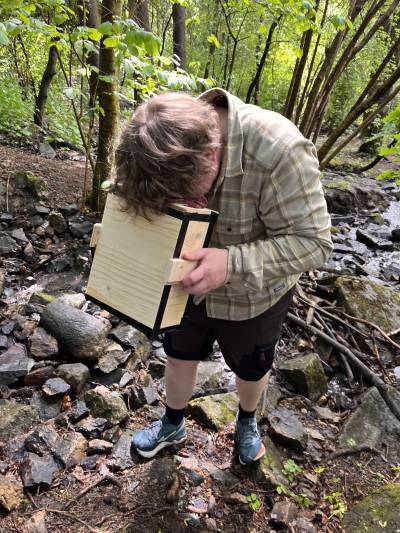
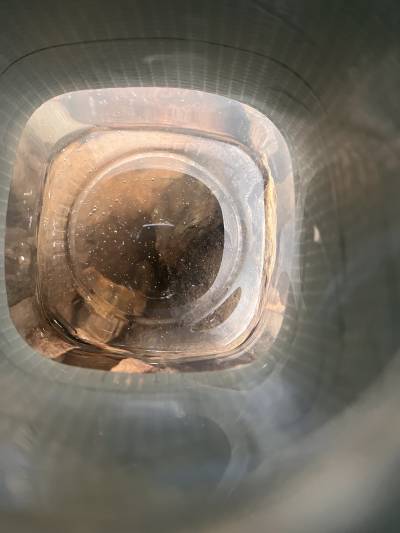
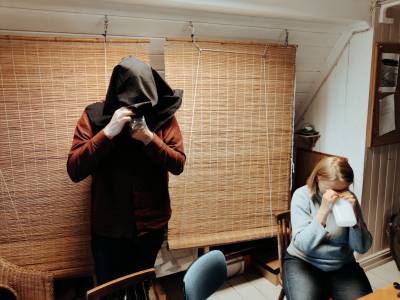
Samling/Gathering I
4.-8. april 2022
Første samling for kunstnerne! Prosjektideer ble presentert gjennom turer til aktuelle steder til våtmarkets randsoner, fellesøvelser, samtaler og fellesmåltider.
First gathering for the artists. Project ideas were shared through practise sessions, discussions and under common meals.
Photo credit: Jiska Huizing
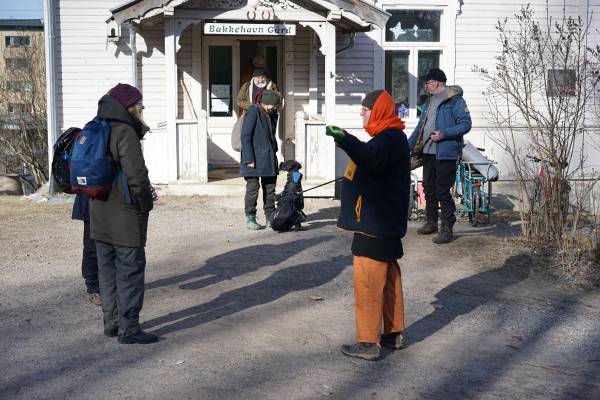
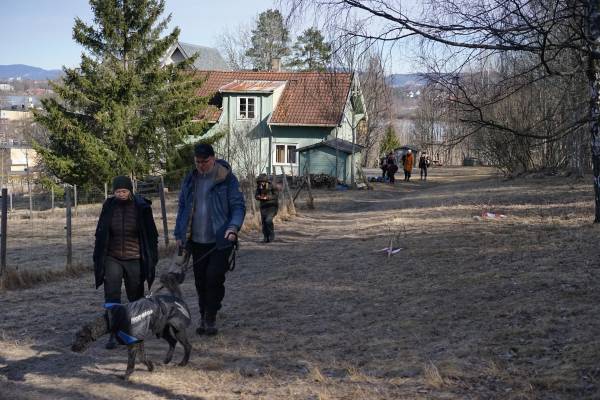
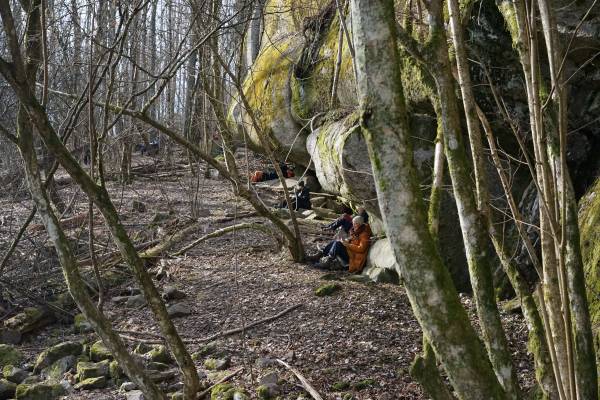
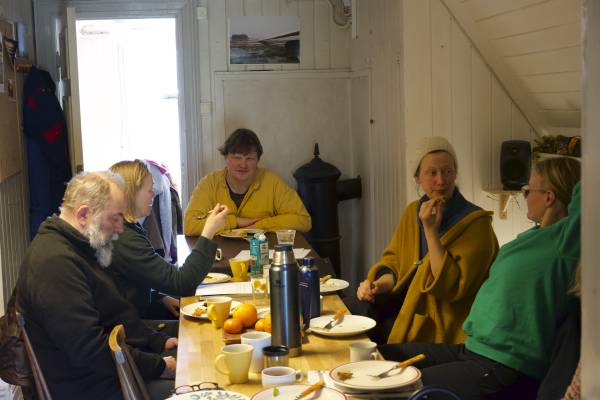
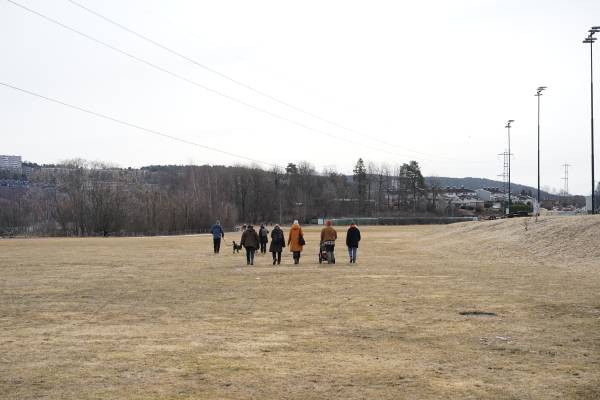
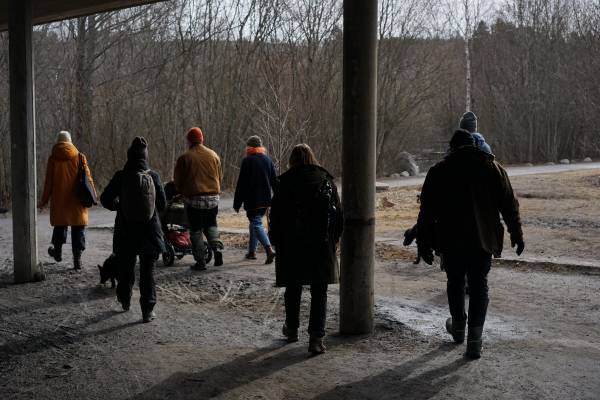

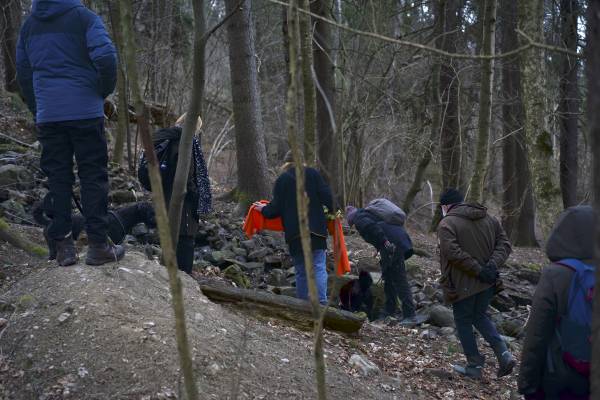

Prosjektbeskrivelse
Prosjektet “Paviljong Våtmark” er i Østensjøvannet naturreservat, et våtmarksområde i bydelen Østensjø i Oslo. Ni kunstnere vil møtes i flere samlinger i 2021 og 2022 og arbeide med nye verk i dette området. Det vil i løpet av prosjektperioden være flere utendørsarrangementer for publikum. Naturreservatet ble opprettet i 1992, på bakgrunn av det unike artsmangfoldet som holder til i og rundt vannet. Blant den rike variasjonen av plantearter, insekter, flaggermus, amfibier og fugler finner man arter som knapt finnes andre steder i landet. Oldtidsveien lå på østsiden av vannet og det er spor av jordbruk fra rundt 4000 år bakover i tid. Østensjøvannets miljøpark ligger i forlengelsen av reservatet og består av blant annet turveien rundt vannet, som er veldig populær for både turgående, joggere og fuglekikkere og flere fotballbaner nær vannet. Paviljong ønsker vi å undersøke ulike syn på og idéer om verdi knyttet til sted. Hvem og hvilke livsformer har rett til å tilhøre et miljø?
Postkolonialistisk diskurs har belyst problematiske sider ved verdigrunnlaget som idéen om nasjonalparker og naturreservat er bygd på. Utryddelsen av biologisk mangfold, klimaforandringer og presset på land og vannområder utfordrer syn på relasjonene mellom menneske og natur. Det er derfor spesielt interessant å la en kunstnerisk utforskning av tematikken problematisere og kaste om på verdigrunnlag og idéer knyttet til slike parker og reservater.
En fellesnevner for kunstnerne er en interesse for de dynamiske prosessene som utgjør et sted. Vi vil ikke bygge en fysisk paviljong eller et byggverk. Kunstnergruppen vil ta utgangspunkt i våtmarkas randsoner som utgangspunkt for kunstnerisk arbeid. Vi tenker her randsoner ikke utelukkende i biologisk forstand (med gradvise forandring i miljøfaktorene i et geografisk område, hvordan for eksempel vegetasjonen endrer seg fra våt til tørrmark), men også de urbane grensesonene til verneområdet der ulike lokale interesser for aktivitet utspiller seg, som for eksempel boområder, fotballbanene, Bølerbekkens løp, parsellhagene, fuglekikkerbua og den uvisse fremtiden till den nedlagte Eterfabrikken.
Kunstnerne velger randsone og arbeider individuelt eller i samarbeid med hverandre. “Paviljong Våtmark” vil være samlingsbasert og prosessorientert, der den siste samlingen vil være offentlige arrangementer med blant annet visninger, performance og foredrag. Vi ønsker ikke å lage varige installasjoner/skulpturer i verneområdet, samtidig er varighet et sentralt tema som ramme for de kunstneriske undersøkelsene. Kunstprosjekter foregår ofte innen et relativt kort tidsrom (gjenspeilet av støtteordninger), mens skulptur i offentlige rom, arkiver og samlinger har lengre tidshorisont. I Paviljong ønsker vi å tenke rundt en modell for kunstnerisk arbeid og samarbeid der arbeider kan gjenopptas av oss eller andre kunstnere om for eksempel ti, tretti og femti år frem i tid. Slik vil arbeidene, sammen med randsonen, fungere som en “tidslinse”, ikke bare for forandringene av området, men også for endringer i forståelsen for samspillet mellom liv i sonen. Modellen vi ønsker å utprøve er en form for bibliotek av metoder, instrumenter og dokumentasjon.
Project description
The project “Pavilion Wetland“ takes place in the Østensjøvannet nature reserve, a wetland area in the Østensjø district in Oslo. The nature reserve was established in 1992, on the basis of the unique biodiversity that resides in and around the water. Among the rich variety of plant species, insects, bats, amphibians and birds, you find species that are hardly anywhere else in the country. “Oldtidsveien”, the ancient trackway, is on the east side of the lake and there are traces of agriculture from around 4000 years ago. Østensjøvannet Miljøpark is located in the extension of the reserve and consists of (among others) a path around the water, which is very popular for both strollers, joggers and bird watchers and several football fields near the water. In Pavilion, we want to explore different ideas about value related to place, and we ask: who and what life forms have the right to belong to an environment?
Postcolonial theories and critical heritage studies have shed light on the problematic sides of the values that the idea of national parks and nature reserves are built on. The extinction of biological diversity, climate change and the pressure on land and water areas challenge our views on the relations between humans and nature. Therefore, it is especially interesting to let an artistic research of these themes problematize and turn upside down the values and ideas connected to such parks and reserves.
Common for the artists is an interest in the dynamic processes that make up a place. We do not want to build a physical pavilion or a structure. The artist group will be focusing on the wetland's transition areas as a starting point for artistic work. We are thinking here of transition zones not only in the biological sense (ecotone), but also the urban zones bordering the protected area where different local interests for activity take place. For example residential areas, the football fields, Bølerbekken, the allotment gardens, the birdwatching hut and the uncertain future of the disused Ether factory (Eterfabrikken).
The artists choose transition zones and work individually or in collaborations. “Pavilion Wetland” will be workshop based and process-oriented, where a “final” public event will include screenings, performances, walks and lectures. We do not want to make permanent installations / sculptures in the protected area, but at the same time duration is a central theme as a framework for the artistic investigations. Art projects often take place within a short period of time (reflected by funding limits), while sculpture in public spaces, archives and collections have a longer time horizon. In Pavilion, we want to develop a model for artistic work and collaboration where works can be resumed by us or other artists in, for example, ten, thirty and fifty years ahead. In this way the works, together with the edge zones, will function as a “time lens”, not only for the physical changes in the area, but also for changes in the understanding of the interaction between life in the zones. The model we want to test is a form of a library of methods, instruments and documentation.

